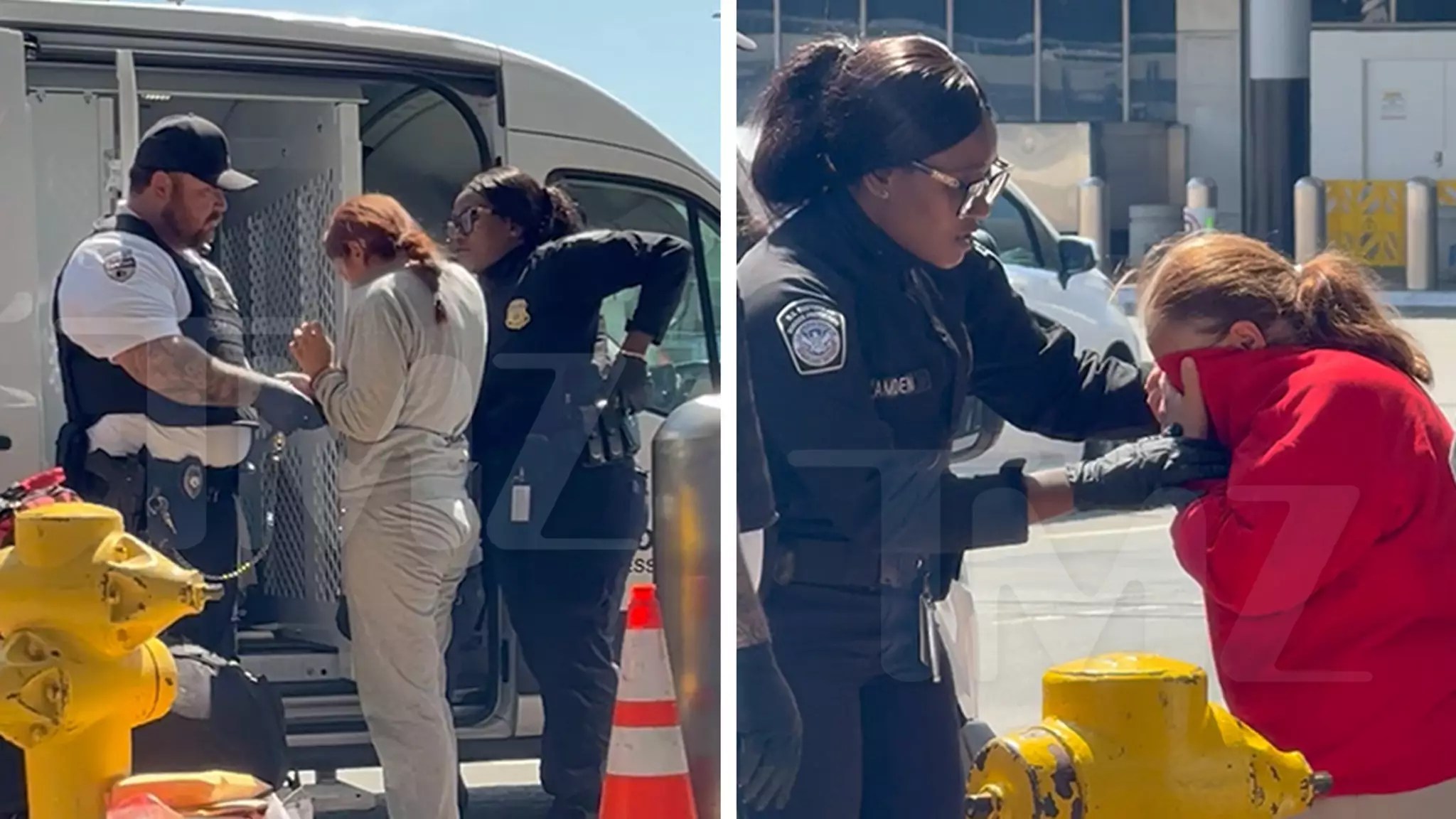In a poignant scene captured on video, two women, who are believed to have entered the United States illegally, were escorted in handcuffs to a removal flight at Los Angeles International Airport (LAX). The footage, obtained by TMZ, reveals a moment that encapsulates the grim reality of America’s immigration enforcement. As they were transported in a van, the women hesitated to leave its confines, a visual metaphor for the fear and uncertainty faced by many undocumented immigrants. The interaction with U.S. Customs and Border Protection (CBP) agents, especially the brusque directive that “it’s too late for that,” stresses the power dynamics at play during such moments.
This scenario raises critical questions about the human dignity of individuals caught in the immigration system. Compulsory handcuffing and an escort to the removal flight strip away basic dignity, reducing humans to mere subjects of enforcement. Such practices can lead to psychological trauma, perpetuating a narrative that dehumanizes not just the individuals involved but also the entire conversation surrounding immigration in the United States.
The Complex Journey of Deportations
It’s essential to understand that the plight of these women is symptomatic of a broader system that has ramped up enforcement measures, particularly under recent administrations. The role of ICE (U.S. Immigration and Customs Enforcement) and CBP is well-documented, with LAX serving as a significant hub for deportation flights. The current systematic approach—sweeping up individuals and transporting them to LAX for removal—provides insight into how immigrants are treated not as individuals but as cases to be processed and removed.
One must ponder the implications of the statement that these women would face significant hurdles if they ever tried to return legally. The flagging system implemented by authorities means that anyone who has previously been undocumented faces a mountain of bureaucratic hurdles in their attempts to re-enter the country lawfully. This institutionalized barrier can discourage individuals from seeking legal avenues, thus perpetuating a cycle of fear and uncertainty for those affected.
A Wider Narrative on Immigration Policies
The heart-wrenching scene reflects not only the individual struggles of the two women but also a larger narrative regarding the United States’ immigration policies. The current administration’s stance on immigration has resulted in sweeping changes that affect millions. The decision to deport individuals is rarely, if ever, made in a vacuum; it arises from political imperatives and societal attitudes toward immigration. The shift in policies under a second Trump term has further entrenched the harsh realities of enforcement, and many argue that these changes disregard both the humanitarian aspects and the undeniable contributions that immigrants make to society.
Moreover, the emotional toll these deportations take on families can be profound. Children, spouses, and extended families of immigrants often bear the brunt of sudden removals. This ripple effect creates a cycle of trauma that can haunt communities, as families are torn apart with little regard for the reasons why individuals sought refuge or a better life in the United States in the first place.
The Intersection of Health and Human Rights
Interestingly, the instance that another immigrant was delayed from removal due to health complications offers a sobering reminder of the intersection between immigration enforcement and health care rights. The case of the Turkish national who experienced chest pains en route to deportation underscores the reality that many apprehended individuals are not only facing legal harm but also potential health crises. The lack of proper medical attention during apprehension—or the failure to consider the health implications of rigorous immigration enforcement—reveals another layer of neglect in a system designed to prioritize removal over care.
The broader implications for public health and human rights in these enforcement operations cannot be overlooked. It raises an important discourse on whether a nation that positions itself as a leader in human rights can ethically justify practices that dehumanize and endanger vulnerable populations.
The emotional and physical toll on these women, and countless others like them, warrants introspection about the American values at the core of immigration policy. In an age when the rhetoric around immigration is charged and often polarized, it is vital to seek empathy and understanding while advocating for systemic change that prioritizes human dignity.


Leave a Reply